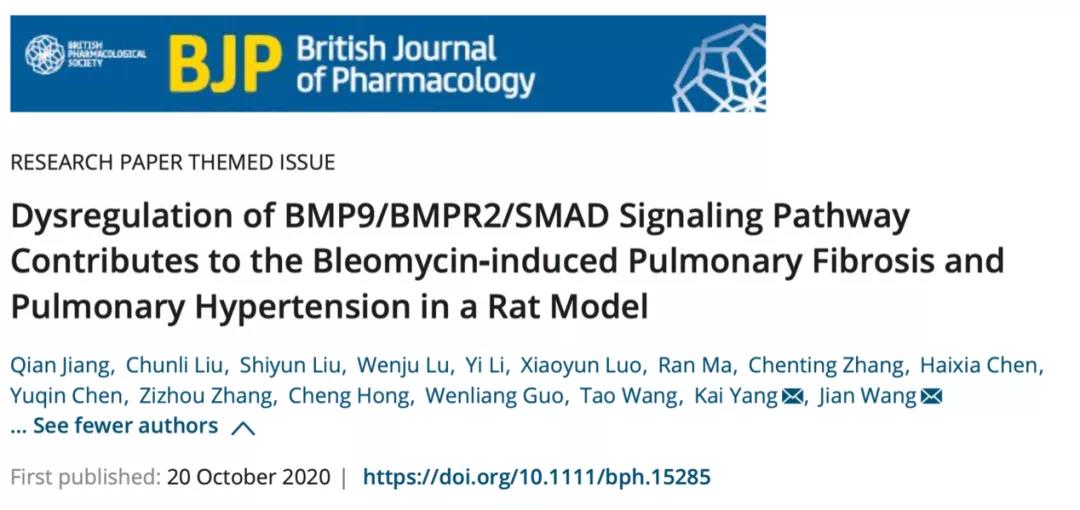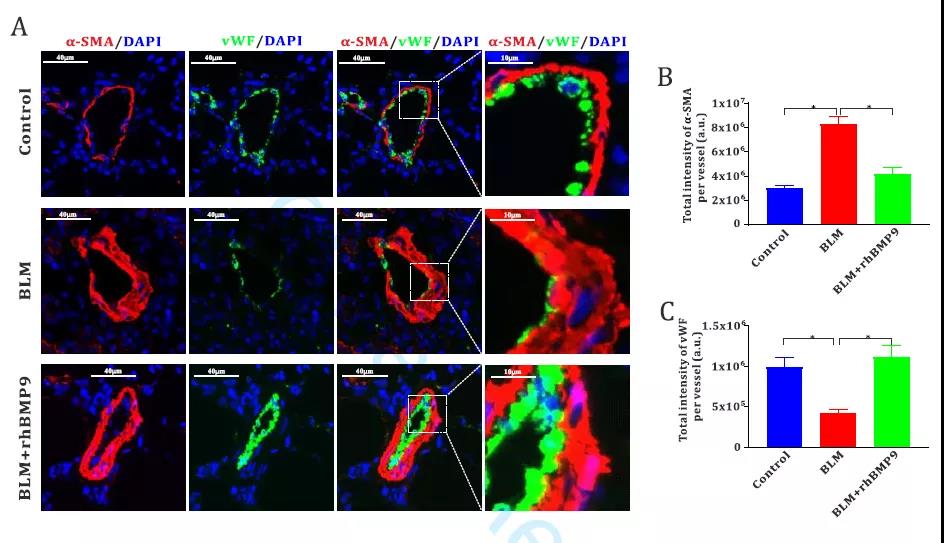SKLRD Published a Basic Research Paper on Pulmonary Hypertension Related to Pulmonary Fibrosis in the British Journal of Pharmacology
2020-10-121026On October 20, 2020, the pulmonary vascular disease team of the State Key Laboratory of Respiratory Disease published a basic research paper on pulmonary hypertension related to pulmonary fibrosis in the authoritative British Journal of Pharmacology (impact factor: 7.73), “Dysregulation of BMP9/BMPR2/SMAD Signaling Pathway Contributes to the Bleomycin-induced Pulmonary Fibrosis and Pulmonary Hypertension in a Rat Model”. Professor Wang Jian and Associate Professor Yang Kai are the co-corresponding authors of the paper, Doctor Jiang Qian, Professor Liu Chunli, postgraduate student Liu Shiyun and Professor Lu Wenju are the co-first authors of the paper.

Pulmonary hypertension related to pulmonary fibrosis is the third type of pulmonary hypertension, of which the pathogenesis is unknown and there is no effective treatment. Studies have shown that 8%-15% of patients with pulmonary fibrosis are found to have pulmonary hypertension after the preliminary diagnosis, and as high as 30%-50% of patients are found to have pulmonary hypertension at the last stage. Pulmonary hypertension is also an important factor for the poor prognosis of pulmonary fibrosis. Therefore, a systemic study of the pathogenesis and potential molecular mechanisms of pulmonary hypertension related to pulmonary fibrosis is of potential significance for the further search for new therapeutic targets.
In this research, we have established a rat model of bleomycin-induced pulmonary hypertension related to pulmonary fibrosis to systemically analyze the pathogenesis of the disease from early stage to the last stage. On one hand, we have found that endothelial injury can take place at the early stage of BLM-induced lesions and cause the abnormal proliferation and remodeling of small vessels. This process is complementary to BLM-induced fibrotic lesions, resulting in pulmonary fibrosis and pulmonary hypertension. On the other hand, we reported that BMP9/BMPR2/SMAD signaling pathway have been downregulated continuously and progressively in the BLM-induced pulmonary hypertension related to pulmonary fibrosis for the first time. The downregulation of the signaling pathway is an important molecular basis for the apoptosis of pulmonary artery endothelial cells and pulmonary vascular remodeling. Further studies have found that with the activation of Human BMP-9 recombinant protein, BMP9/BMPR2/SMAD pathway can effectively alleviate BLM-induced pulmonary hypertension, reduce right ventricular systolic pressure and the indicator of right ventricular hypertrophy, reduce the apoptosis of pulmonary artery endothelial cells and pulmonary vascular remodeling. The research further deepens our understanding of the pathogenesis of pulmonary hypertension related to pulmonary fibrosis, and targeted activation of BMP9/BMPR2/SMAD pathway is expected to become a new and potential treatment for this subtype of pulmonary hypertension.

















